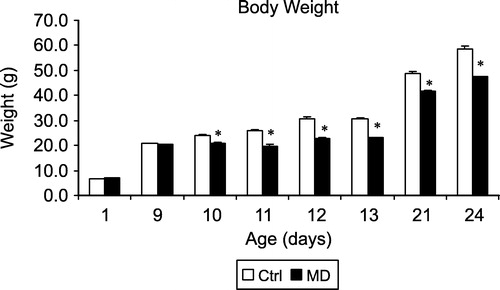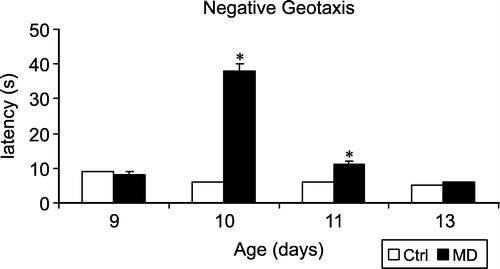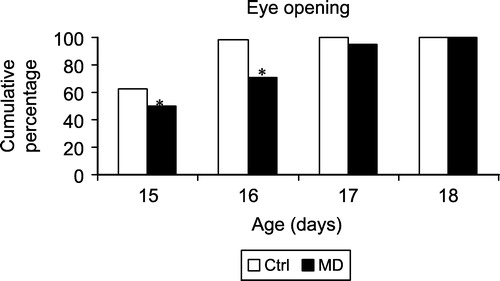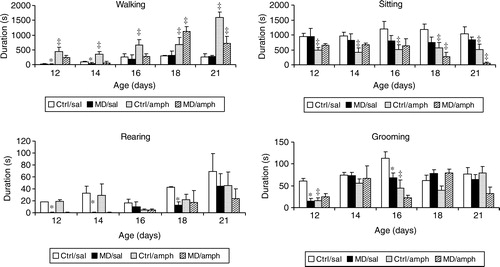Figures & data
Figure 1 Body weight of MD and Ctrl rats from postnatal one to postnatal day 24. The data are a summary of a large series of animals. The total number are: pnd1: Ctrl N = 159, MD N = 151; pnd9: Ctrl N = 196, MD N = 183; pnd10: Ctrl N = 188, MD N = 166; pnd11: Ctrl N = 16, MD N = 16; pnd12: Ctrl N = 16, MD N = 16; pnd13: Ctrl N = 16, MD N = 16; pnd9: Ctrl N = 175, MD N = 155; pnd24: Ctrl N = 16, MD N = 13. Values are mean ± SEM. * represents a significant difference between MD and Ctrl groups.

Figure 2 Reversal latency in the negative geotaxis experiment in MD and Ctrl rats. pnd9: Ctrl N = 92, MD N = 63; pnd10: Ctrl N = 92, MD N = 63; pnd11: Ctrl N = 54, MD N = 54; pnd13: Ctrl N = 48, MD N = 47. Values are mean ± SEM. * represents a significant difference between MD and Ctrl groups.

Figure 3 Eye opening in MD and Ctrl rats. On the y-axis the cumulative percentage of rats that had their eyes open is represented. The Ctrl groups consisted of 61 animals, the MD groups of 62 animals. * represents a significant difference between MD and Ctrl groups.

Figure 4 The effects of amphetamine (amph) on the duration of various components of motor behaviour in the open field of MD and Ctrl rats. Each group consisted of 5–7 animals and each day new animals were used. Values are mean ± SEM. * represents a significant difference between MD and Ctrl groups. ‡ represents a significant difference between amphetamine and saline treatment.

Figure 5 The effects of MK801 (MK) on the duration of various components of motor behaviour in the open field of MD and Ctrl rats. Each group consisted of 5–7 animals and each day new animals were used. Values are mean ± SEM. * represents a significant difference between MD and Ctrl groups. ‡ represents a significant difference between MK801 and saline treatment.
